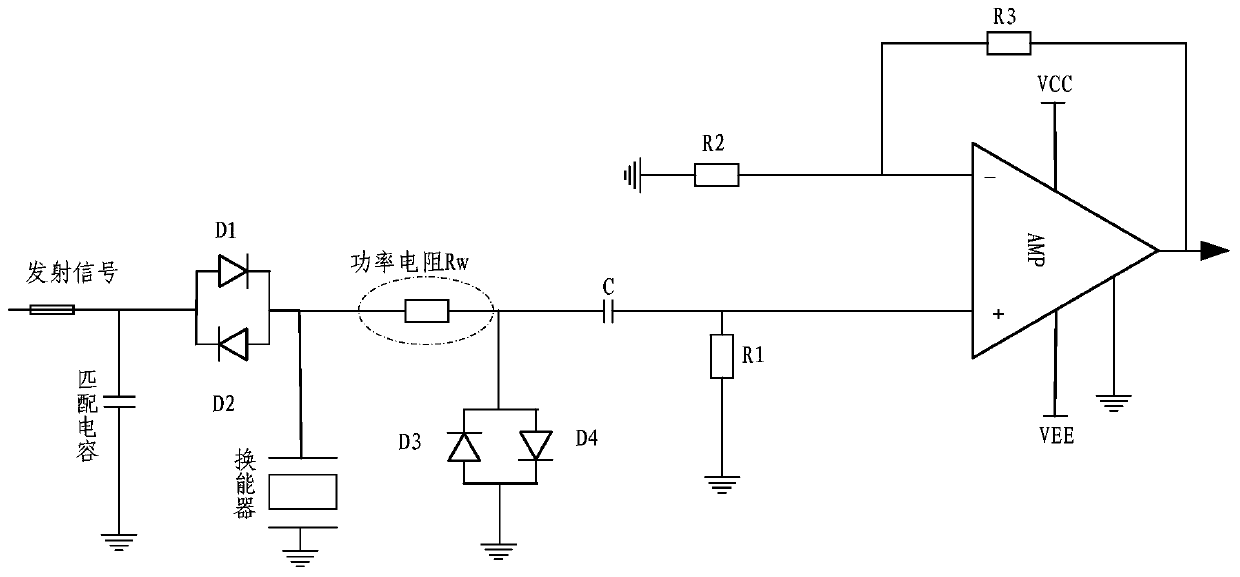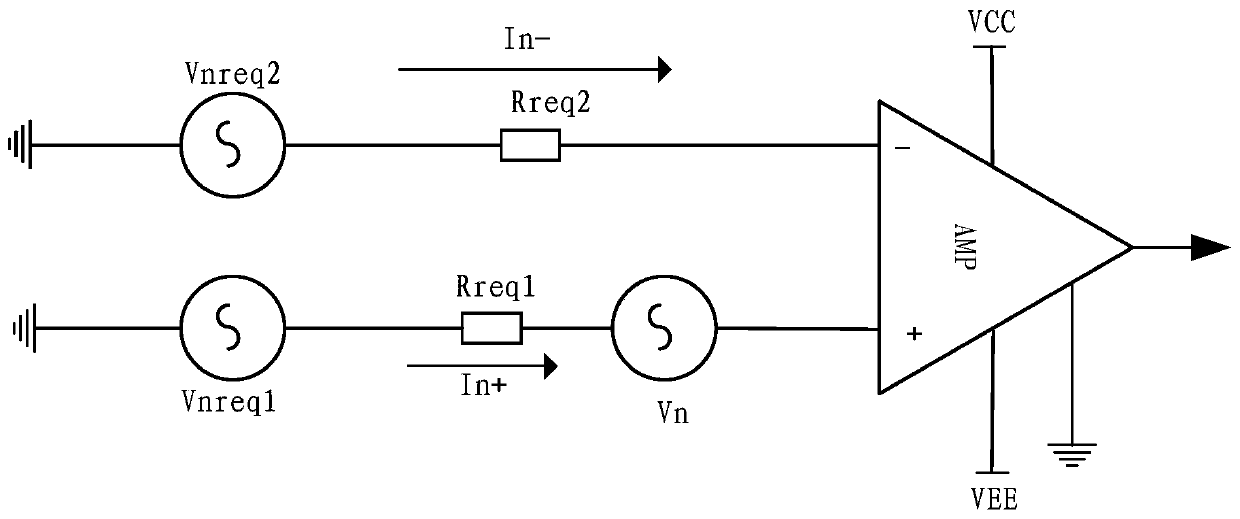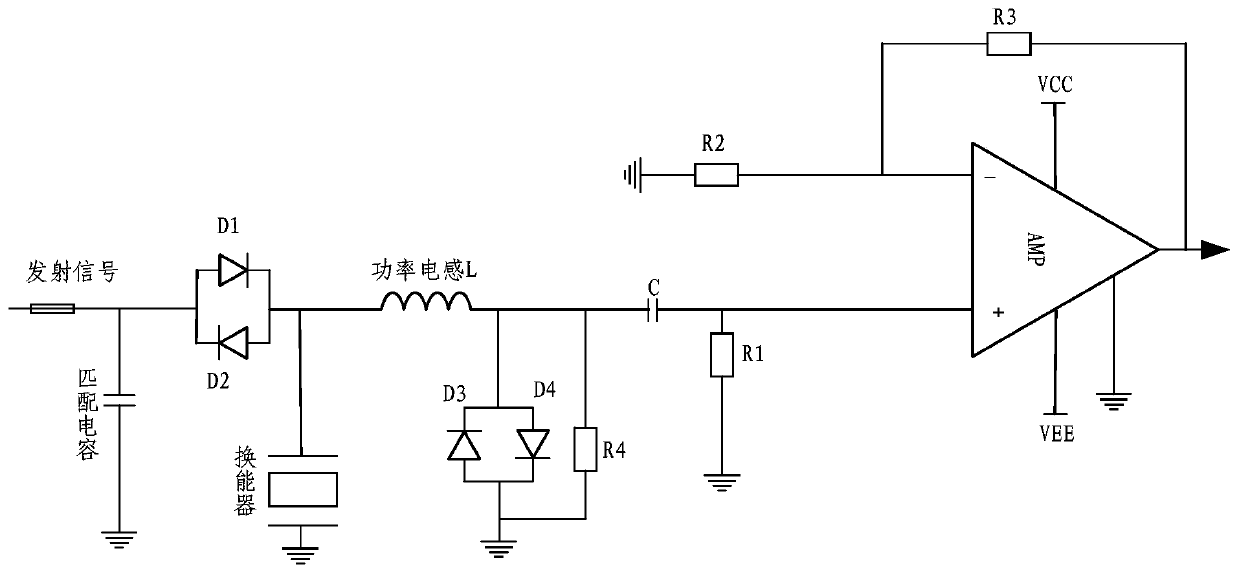Low-noise primary amplification circuit suitable for transmitting-receiving combined transducer and noise decomposition method
A primary amplification, combined transceiver technology, applied in the direction of improving amplifiers to reduce noise effects, improving amplifiers to improve efficiency, and improving amplifiers to reduce the harmful effects of internal resistance, which can solve problems such as reducing circuit receiving efficiency and improve signal Reception efficiency, effect of reducing circuit noise
- Summary
- Abstract
- Description
- Claims
- Application Information
AI Technical Summary
Problems solved by technology
Method used
Image
Examples
Embodiment
[0018] Embodiment: As shown in the accompanying drawings, this low-noise primary amplifying circuit suitable for transceiving and displacing transducers mainly includes a transceiving conversion module, a filter module, and an operational amplifier circuit. The transceiving conversion module is provided with protective diode pairs D1, D2, D3, D4, and resistor R4 and power inductor L. The filter module includes resistor R1, capacitor C, and power inductor to form a bandpass filter. The operational amplifier circuit is composed of low voltage, current noise operational amplifier and resistors R2 and R3.
[0019] The equivalent input noise model of the low-noise primary amplifier circuit decomposes the circuit noise into five parts and gives the corresponding calculation method, which mainly includes the following contents:
[0020] 1) Amplify the chip voltage noise Vn;
[0021] 2) Amplify the flow noise Vireq1 generated by the current noise In of the chip flowing through the equ...
PUM
 Login to View More
Login to View More Abstract
Description
Claims
Application Information
 Login to View More
Login to View More - R&D
- Intellectual Property
- Life Sciences
- Materials
- Tech Scout
- Unparalleled Data Quality
- Higher Quality Content
- 60% Fewer Hallucinations
Browse by: Latest US Patents, China's latest patents, Technical Efficacy Thesaurus, Application Domain, Technology Topic, Popular Technical Reports.
© 2025 PatSnap. All rights reserved.Legal|Privacy policy|Modern Slavery Act Transparency Statement|Sitemap|About US| Contact US: help@patsnap.com



